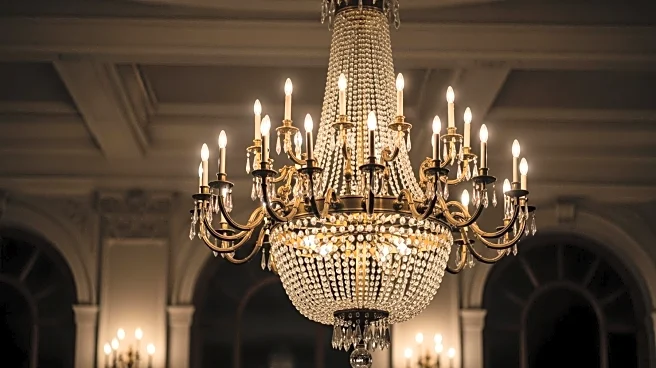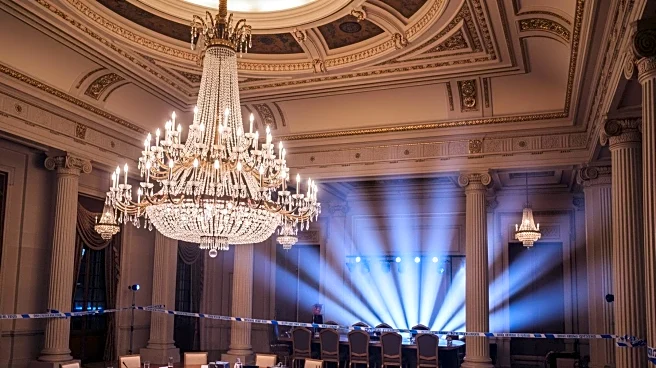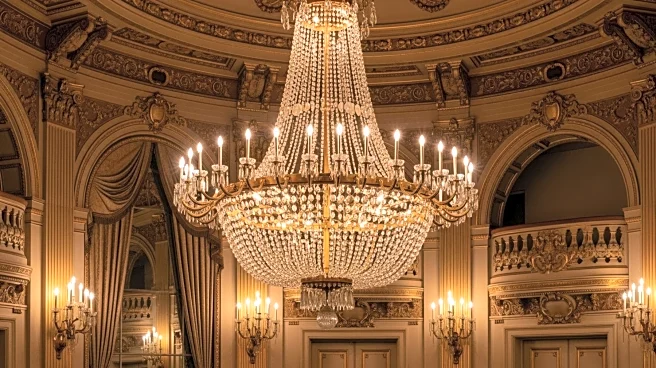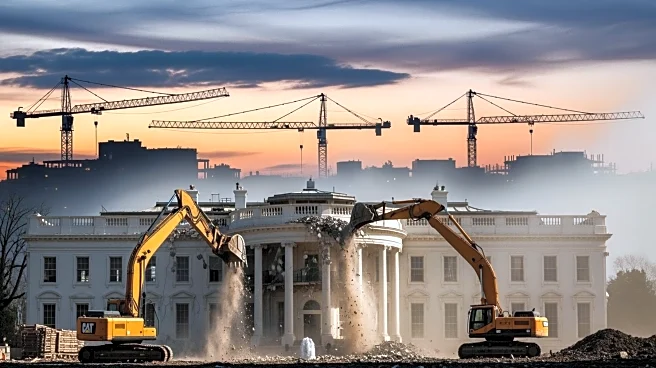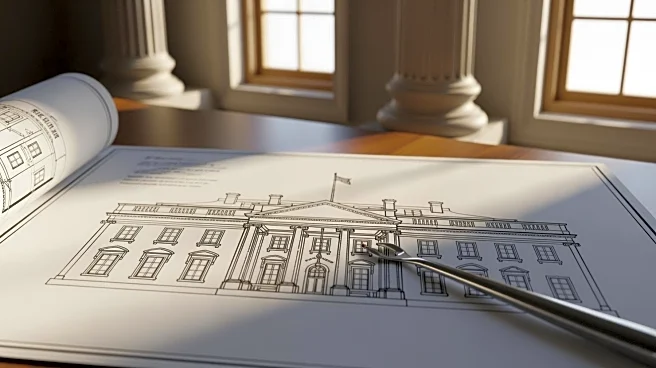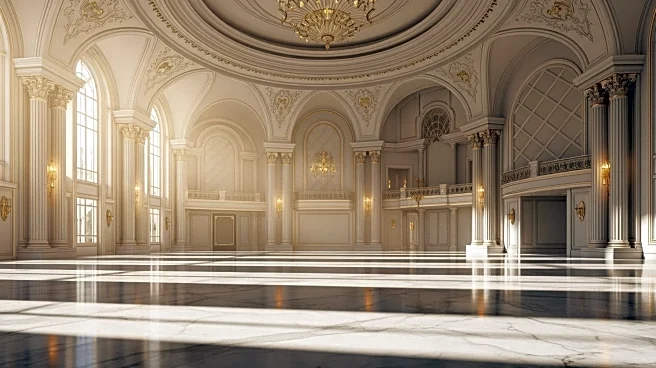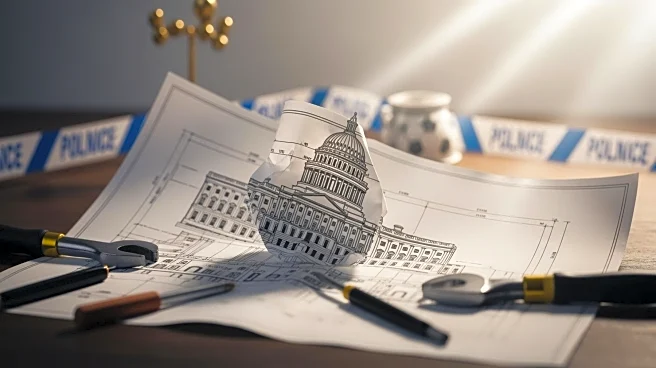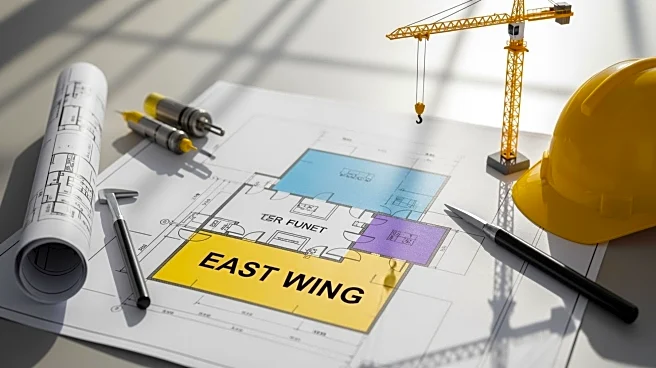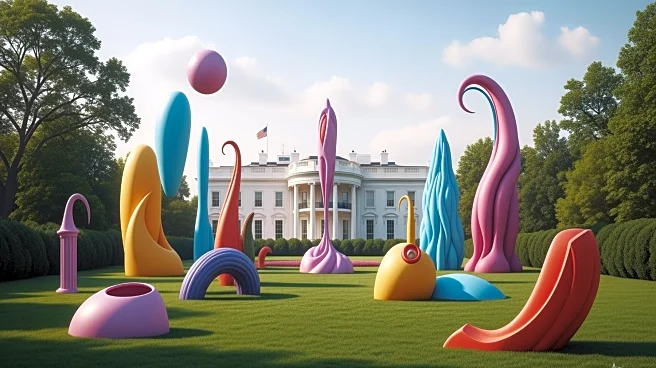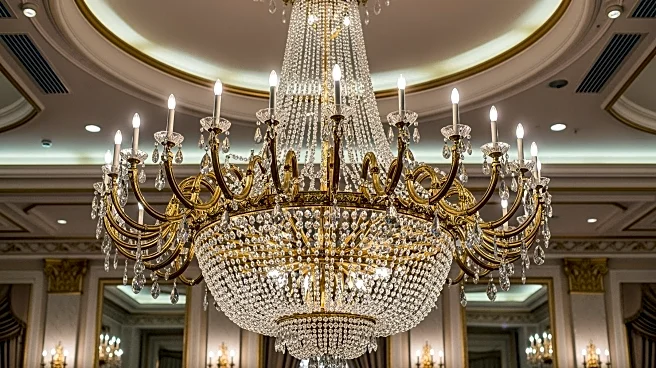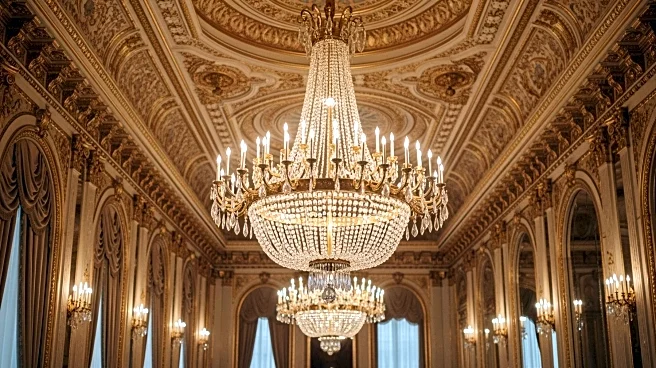What's Happening?
The Trump administration has completed the demolition of the East Wing of the White House to make way for a new presidential ballroom. This decision has attracted mixed reactions, with some praising the project
as a bold move and others condemning it as an unnecessary destruction of historical architecture. The demolition has raised ethical concerns, particularly regarding the funding of the project, which is reportedly supported by private donors. Critics argue that the project reflects President Trump's desire to leave a lasting legacy, while supporters view it as a necessary upgrade to the White House facilities.
Why It's Important?
The demolition of the East Wing and the construction of a new ballroom at the White House highlight the intersection of politics, history, and personal legacy. The project has sparked debate over the preservation of historical sites and the role of private funding in public projects. It raises questions about the balance between personal ambition and public responsibility, as well as the implications of altering a national landmark. The controversy also reflects broader societal divisions, with differing opinions on the appropriateness of such a project during a time of political and economic uncertainty.
Beyond the Headlines
The ethical dimensions of the project are significant, as the involvement of private donors in funding a presidential initiative raises concerns about influence and transparency. The demolition of a historical part of the White House also prompts discussions about the preservation of national heritage and the impact of personal legacy on public spaces. The project may set a precedent for future administrations, influencing how presidential legacies are constructed and perceived. The long-term implications of this development will likely be debated by historians, architects, and political analysts.
